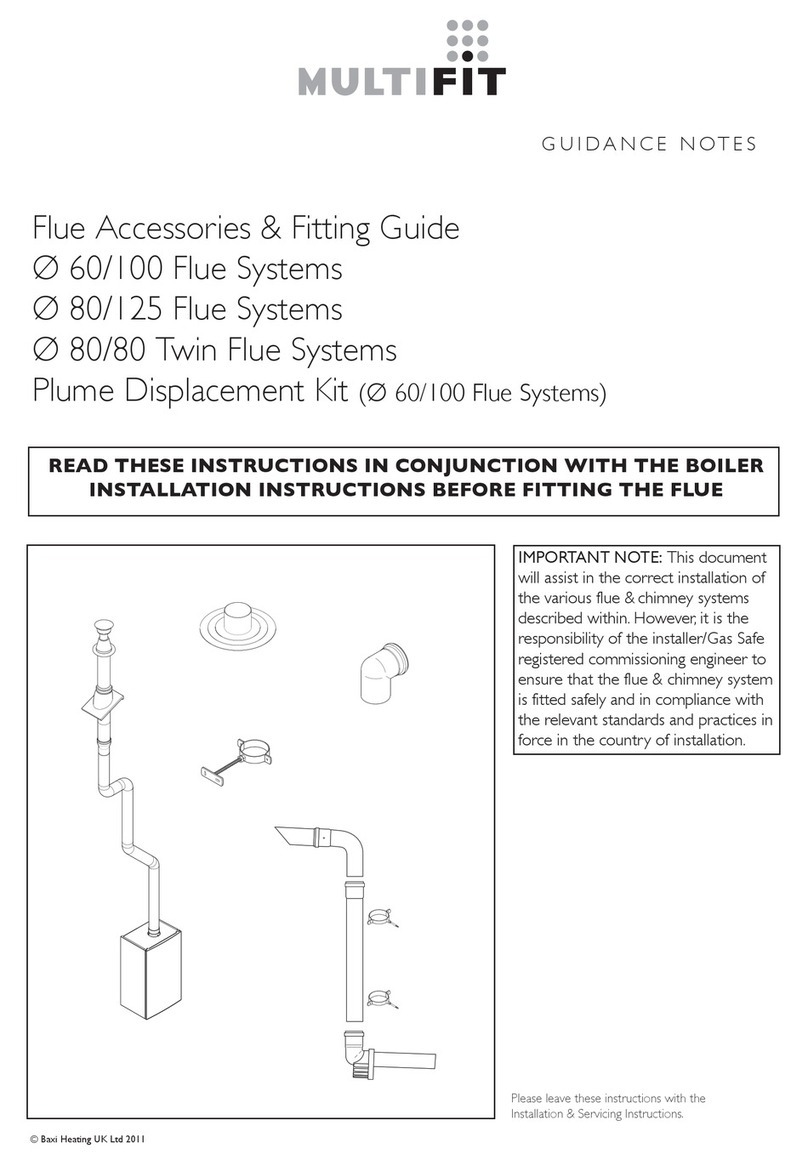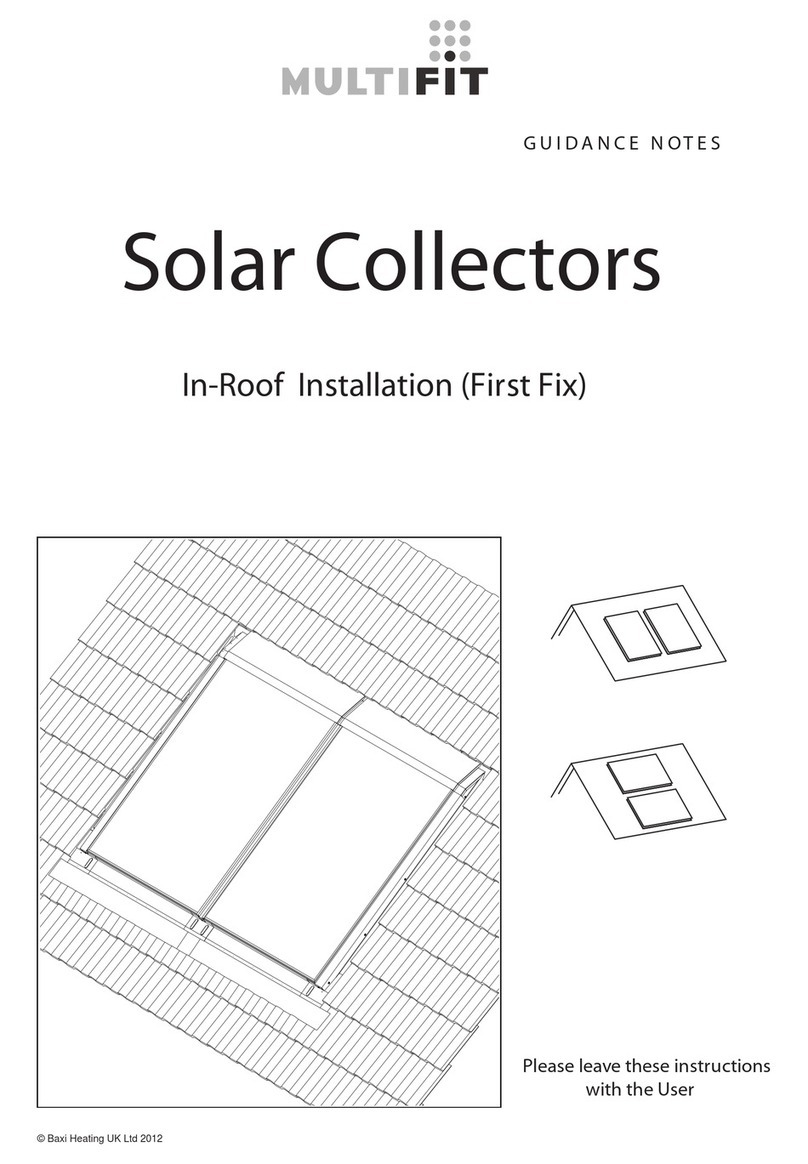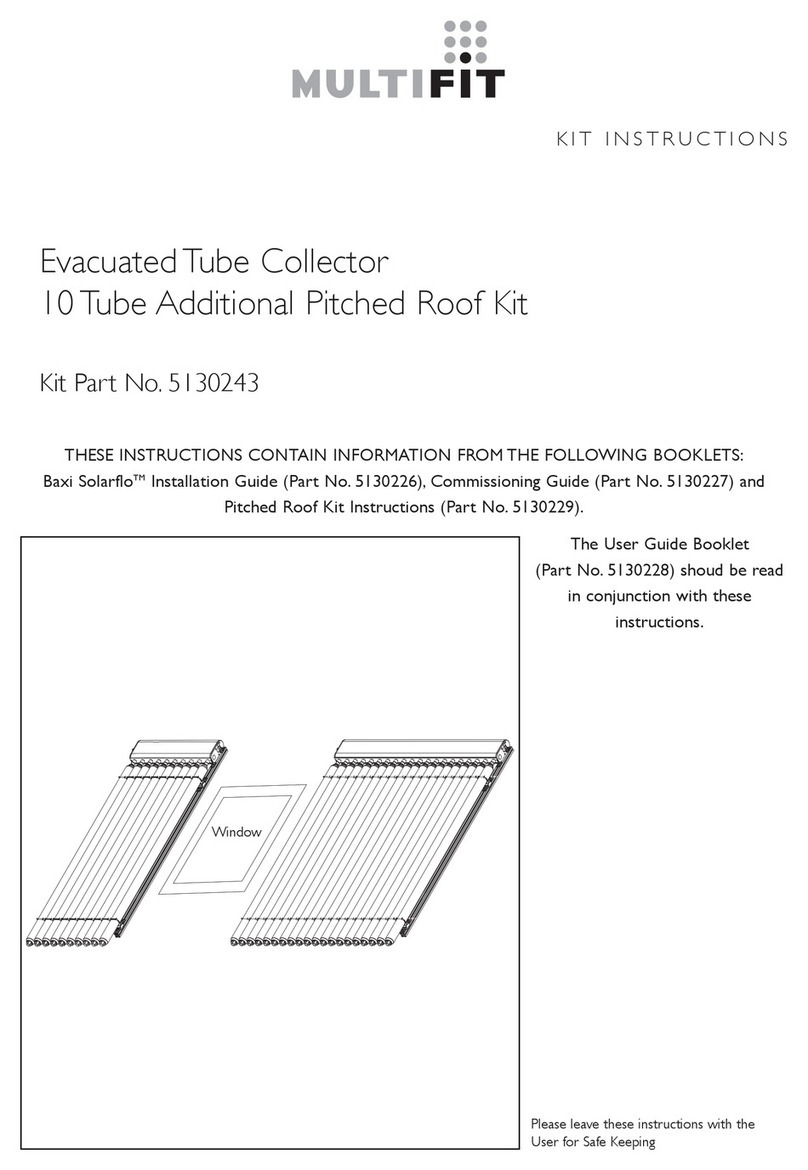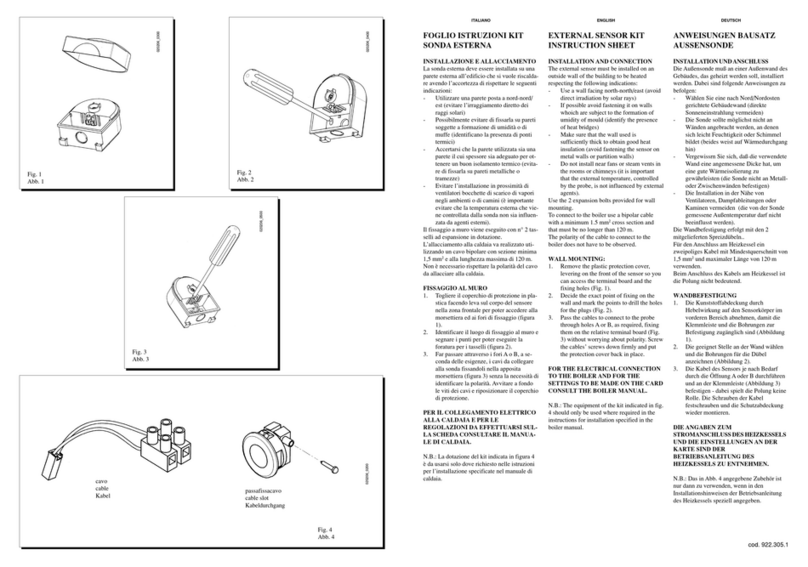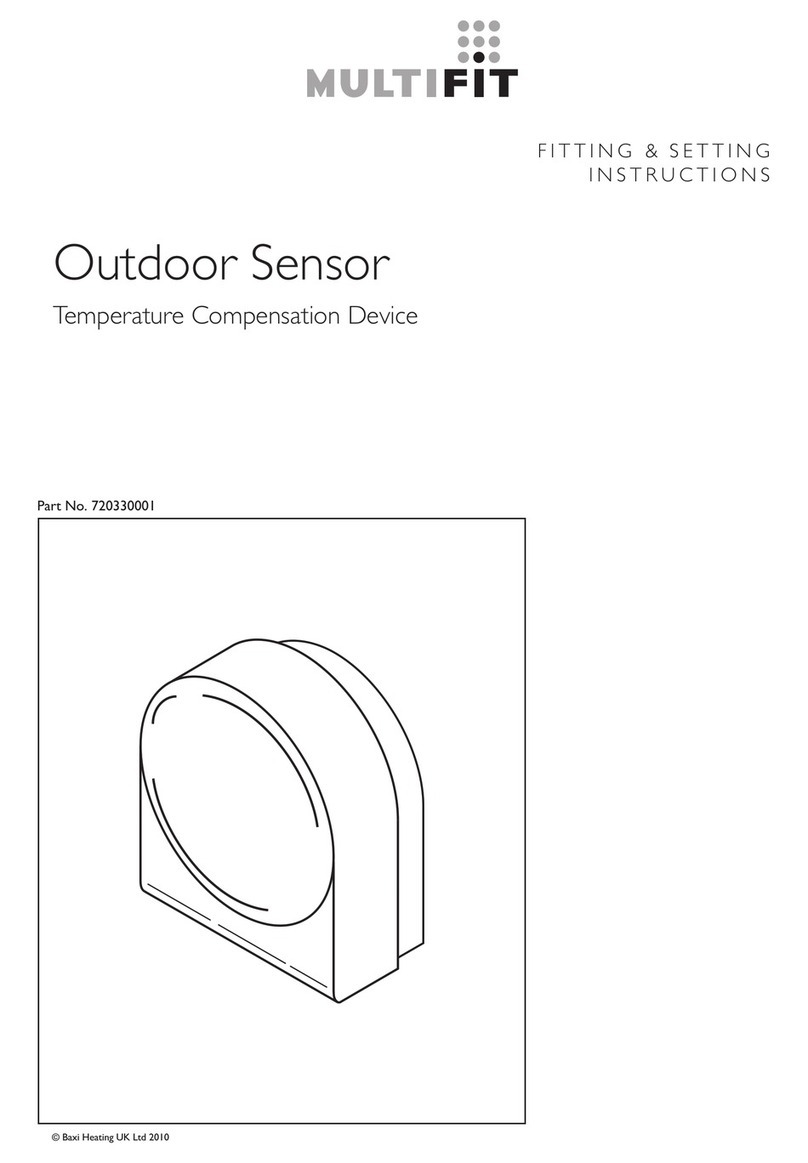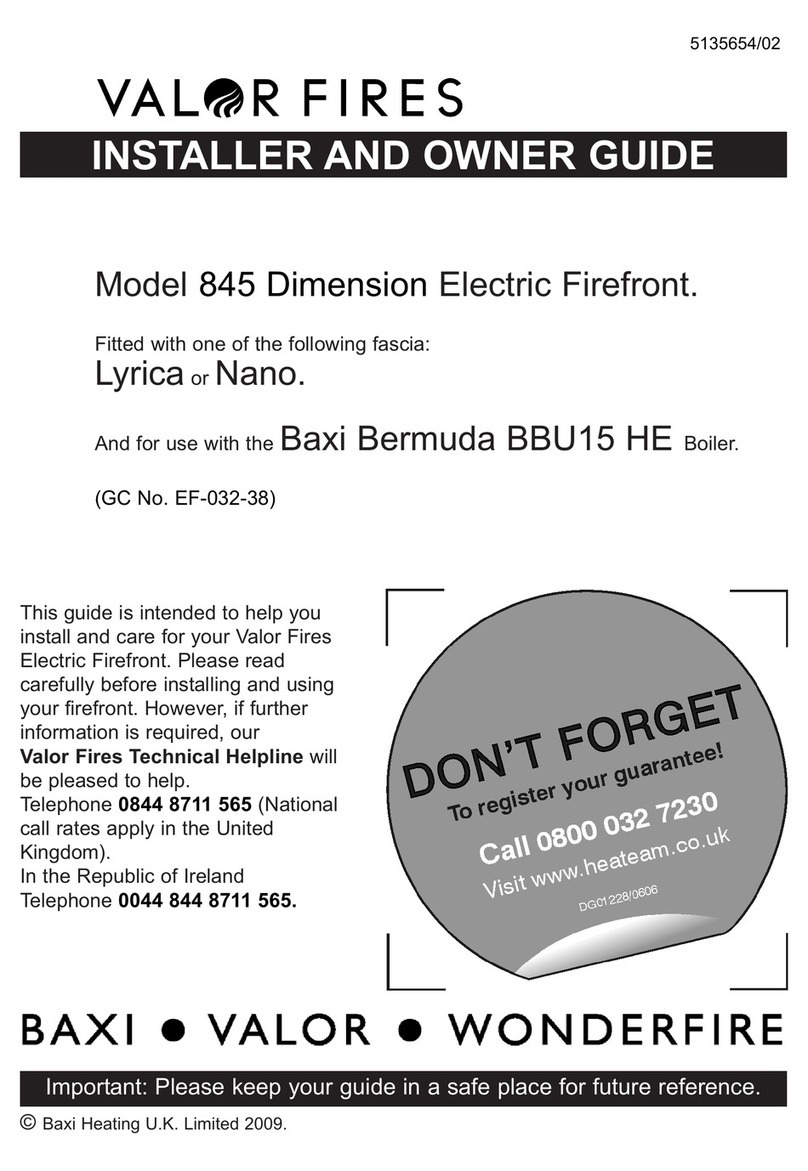7
© Baxi Heating UK Ltd 2006
Sizing, Installation Orientation
Sizing
The amount of solar energy that lands per square metre is more or less the same anywhere in the UK. It follows that the amount of energy available for heat
energy absorption by ground arrays is therefore not affected greatly by different soil types. As a rule, “wetter” soil is slightly better than well-drained soil. The
sizing of slinkies®takes little account of soil types - although the type of soil does slightly affect heat transfer rates, other factors such the moisture content (which
is not always easy to determine until digging has started) will make much more of a difference. However, the formulae of 10 metres of trench to provide 1 kW
of delivered heat from the heat pump can be more or less uniformly applied across most of the UK.
There is a difference between using the “peak” heating requirement of a building to size a ground array, and using the “total annual heat demand”. However,
providing that the building is insulated at least to the requirements of Part L (J in Scotland) of the building regulations (and, preferably, far exceed this) then the
“peak” heating requirement alone can usually be used to size the slinkies®. Provided that the recommended number and lengths of slinkies®are installed
correctly, and the slinkies®are sized to meet the full peak heating requirement of the building (ie. as the sole source of heat - without supplementary electrical
backup, for example), then they will absorb sufficient energy from the ground to heat the building year-around. If too little pipe is buried then the temperature of
the slinky®will fall too much over the course of the winter, to below 0°C, and the heat pump will no longer give its rated output, and exceed its operating
envelope. This will cause the heat pump to operate continuously, eventually potentially freezing the slinkies®. If too much pipe is buried then it will take a
disproportionate amount of water circulating pump energy to move the fluid around the slinky®at a high enough speed to absorb the energy.
Installation Orientation
slinky®coils should be installed vertically in a narrow (300 mm) trench, dug with the narrowest digger bucket. A minimum distance of 5 metres between adjacent
trenches should be maintained. Keep the edge of any trench at least 1.5 metres inside any property line and away from any buildings. The trenches do not have
to be straight. If rock or large boulders are found before the trench gets to 2 metres deep, it is possible to turn the slinkies®on their side, for some or all of this
part of the trench, and dig the trench 1.2 metres deep by 1.2 metres wide.
The pipe
Only MDPE or HDPE (Medium or High Density Polyethylene) pipe should be used, with at least the PE80 pressure rating. Beware of using blue pipe, which
denotes that it contains only fresh water under Water Resources Council guidelines, which would be incorrect as ground arrays contain antifreeze.
Unrolling the coil
The slinkies®are formed and held together using black plastic "zip" ties. When formed into a coil for transport, the slinkies®are held together with white cable
ties. When the slinkies®arrive on site, the white cable ties should be cut, which will allow the coil to be unwound. The slinky®can then be laid out and placed in
the trench.
